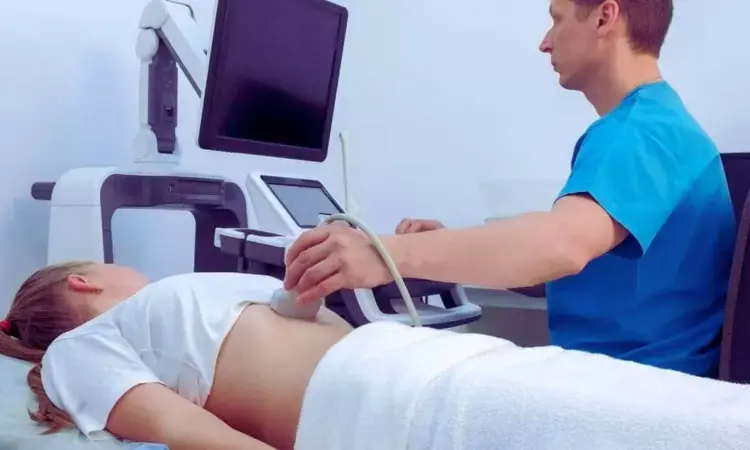- Home
- Medical news & Guidelines
- Anesthesiology
- Cardiology and CTVS
- Critical Care
- Dentistry
- Dermatology
- Diabetes and Endocrinology
- ENT
- Gastroenterology
- Medicine
- Nephrology
- Neurology
- Obstretics-Gynaecology
- Oncology
- Ophthalmology
- Orthopaedics
- Pediatrics-Neonatology
- Psychiatry
- Pulmonology
- Radiology
- Surgery
- Urology
- Laboratory Medicine
- Diet
- Nursing
- Paramedical
- Physiotherapy
- Health news
- Fact Check
- Bone Health Fact Check
- Brain Health Fact Check
- Cancer Related Fact Check
- Child Care Fact Check
- Dental and oral health fact check
- Diabetes and metabolic health fact check
- Diet and Nutrition Fact Check
- Eye and ENT Care Fact Check
- Fitness fact check
- Gut health fact check
- Heart health fact check
- Kidney health fact check
- Medical education fact check
- Men's health fact check
- Respiratory fact check
- Skin and hair care fact check
- Vaccine and Immunization fact check
- Women's health fact check
- AYUSH
- State News
- Andaman and Nicobar Islands
- Andhra Pradesh
- Arunachal Pradesh
- Assam
- Bihar
- Chandigarh
- Chattisgarh
- Dadra and Nagar Haveli
- Daman and Diu
- Delhi
- Goa
- Gujarat
- Haryana
- Himachal Pradesh
- Jammu & Kashmir
- Jharkhand
- Karnataka
- Kerala
- Ladakh
- Lakshadweep
- Madhya Pradesh
- Maharashtra
- Manipur
- Meghalaya
- Mizoram
- Nagaland
- Odisha
- Puducherry
- Punjab
- Rajasthan
- Sikkim
- Tamil Nadu
- Telangana
- Tripura
- Uttar Pradesh
- Uttrakhand
- West Bengal
- Medical Education
- Industry
Ultrasound Outperforms Traditional Tests in Diagnosing Diaphragm Dysfunction: Study Finds

Netherlands: A recent prospective study published in Respiratory Medicine has spotlighted ultrasound as a reliable and effective diagnostic tool for assessing diaphragm dysfunction. It showed strong agreement with clinical diagnoses and solidified its potential role in routine respiratory evaluations.
Traditionally, diagnostic methods such as fluoroscopy and phrenic nerve conduction studies have been used to assess diaphragmatic function, but their reliance on specialized equipment limits accessibility in many clinical settings. Diaphragm dysfunction, a frequently overlooked cause of dyspnea, is typically identified through clinical history, symptoms, and imaging.
Given ultrasound’s advantages as a non-invasive, bedside, and widely available tool, M.D. Wytze S. de Boer, Department of Pulmonology, Isala Hospital, Zwolle, The Netherlands, and colleagues aimed to evaluate its construct validity by comparing ultrasound-based assessments with conventional diagnostic methods in detecting diaphragm dysfunction.
For this purpose, the researchers conducted a prospective, operator-blinded study across two centers in the Netherlands involving 36 adults with suspected diaphragm dysfunction. Participants underwent fluoroscopy, pulmonary function tests, and ultrasound examinations. The primary objective was to assess the agreement between predefined ultrasound diagnostic criteria and traditional methods. Secondary outcomes included evaluating the concordance of each diagnostic approach with the treating physician’s final diagnosis, assessing the performance of individual test parameters, and determining inter-rater reliability.
The study revealed the following findings:
- Concordance between ultrasound and traditional test diagnostic criteria was observed in 55.6% of cases.
- Ultrasound criteria aligned with the treating physician's final diagnosis in 75.0% of cases, higher than traditional test criteria, which showed 63.9% concordance.
- Visual ultrasound assessment, thickening fraction (TF), diaphragm excursion (DE), and fluoroscopy demonstrated high concordance with the final diagnosis at 91.4%, 90.3%, 88.3%, and 91.7%, respectively.
- Inter-rater reliability was strong for fluoroscopy, visual ultrasound assessment, and diaphragm excursion, but was poor for thickening fraction.
The findings highlight ultrasound as a dependable and practical tool for diagnosing diaphragm dysfunction. It showed strong agreement with the treating physician’s final diagnosis and performed well across key parameters, such as visual assessment and diaphragm excursion. Moreover, the high inter-rater reliability of these measures reinforces the utility of ultrasound as a non-invasive, bedside alternative to traditional methods like fluoroscopy.
"Given its accessibility, ease of use, and diagnostic accuracy, ultrasound has the potential to become an integral part of routine clinical evaluation for suspected diaphragm dysfunction," the authors concluded.
Reference:
Wytze S. de Boer, M., Krista L. Parlevliet, M., Leonie A. Kooistra, M., David Koster, M. P., Jellie A. Nieuwenhuis, M., Mireille A. Edens, P., Jan Willem K. van den Berg, M. P., Martijn F. Boomsma, M. P., Jos A. Stigt, M. P., Dirk Jan Slebos, M. P., & Marieke L. Duiverman, M. P. (2025). Ultrasound as Diagnostic Tool in Diaphragm Dysfunction: A Prospective Construct Validity Study. Respiratory Medicine, 108083. https://doi.org/10.1016/j.rmed.2025.108083
Dr Kamal Kant Kohli-MBBS, DTCD- a chest specialist with more than 30 years of practice and a flair for writing clinical articles, Dr Kamal Kant Kohli joined Medical Dialogues as a Chief Editor of Medical News. Besides writing articles, as an editor, he proofreads and verifies all the medical content published on Medical Dialogues including those coming from journals, studies,medical conferences,guidelines etc. Email: drkohli@medicaldialogues.in. Contact no. 011-43720751


